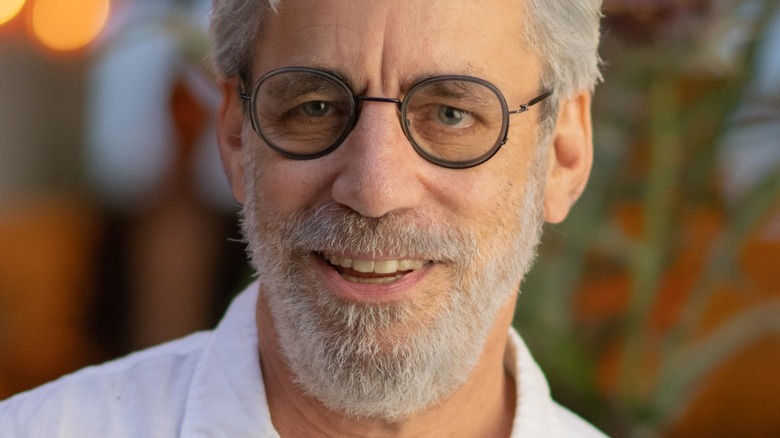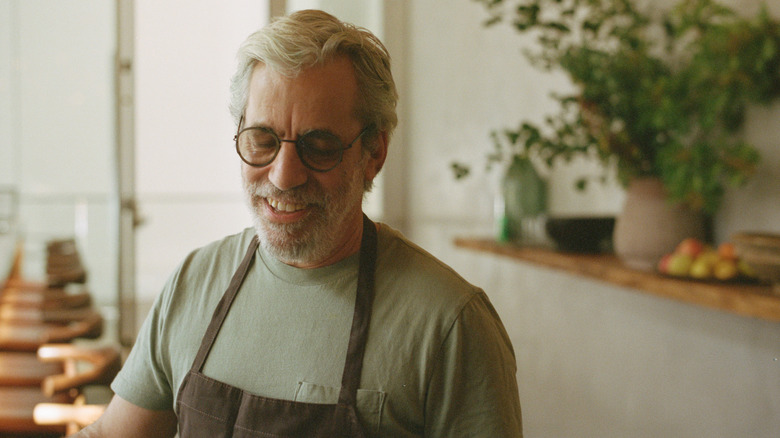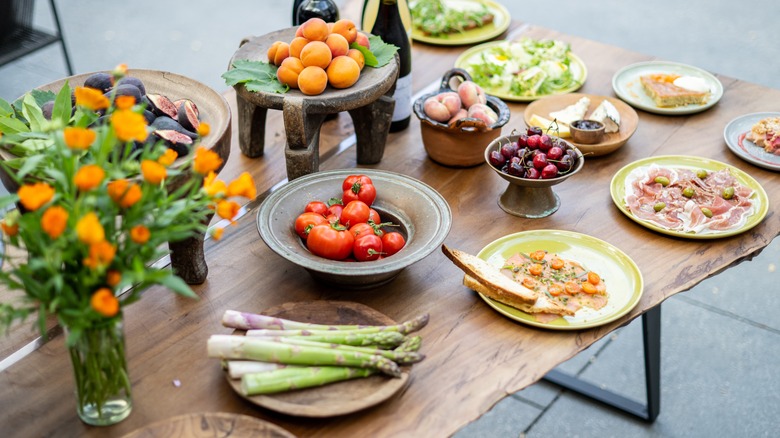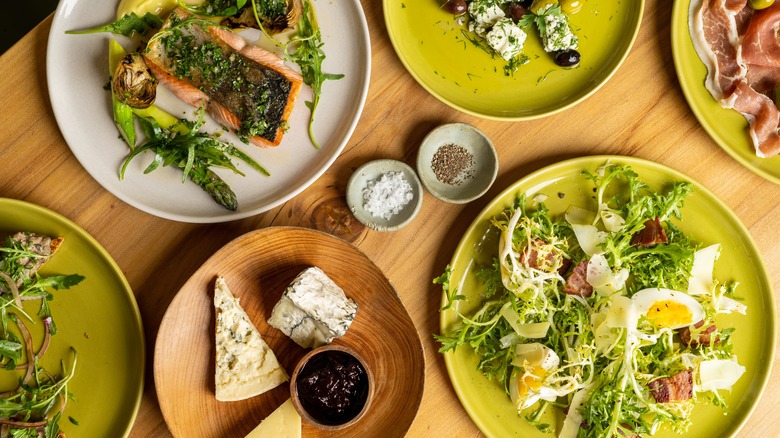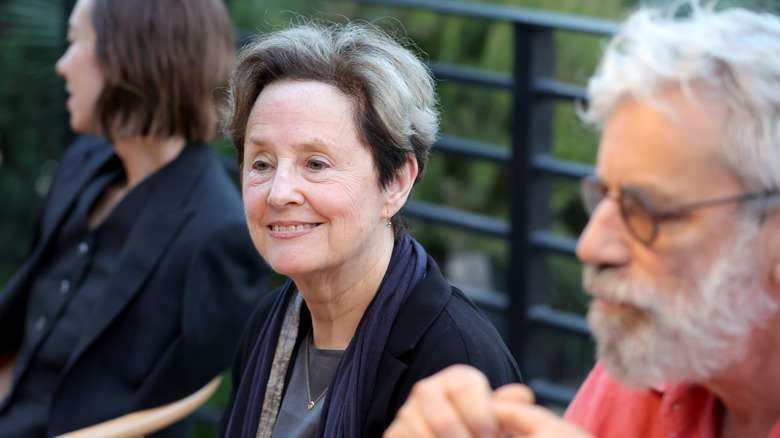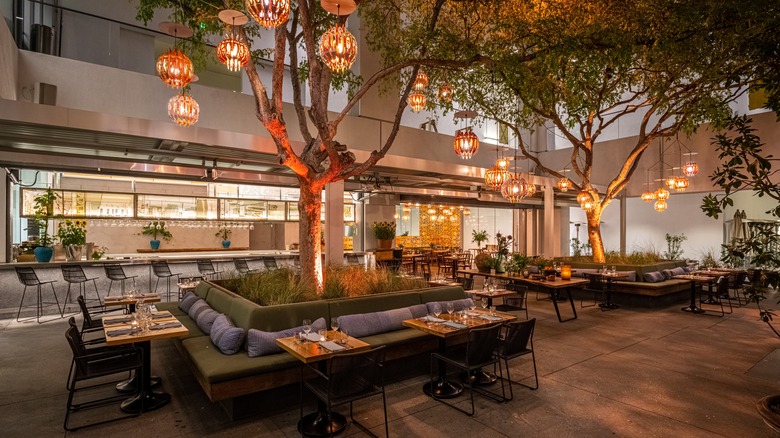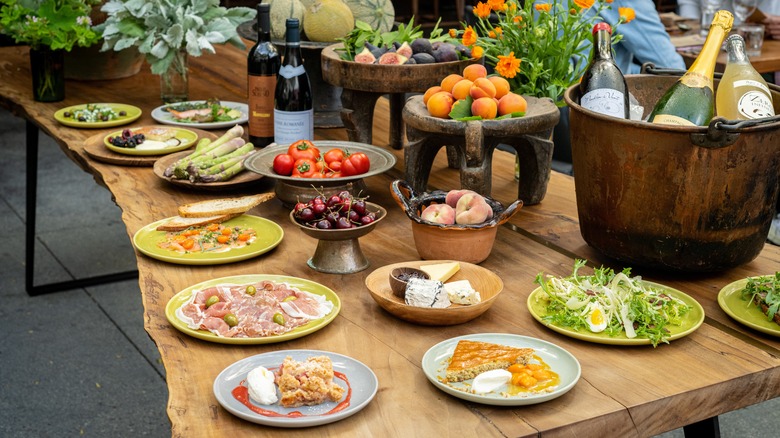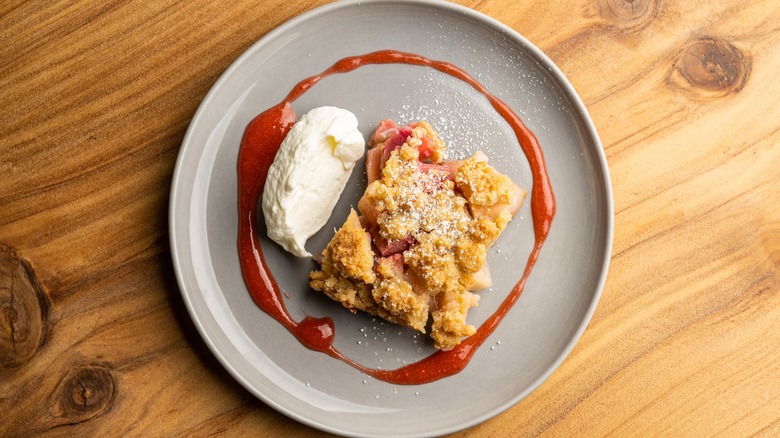Lulu's David Tanis On Simplicity, Alice Waters, And Seasonal Cooking - Exclusive Interview
If you're up early in Los Angeles and decide to wander the farmers' market, you may find yourself unknowingly standing shoulder-to-shoulder at a produce stall with one of the world's most influential chefs. David Tanis is a big reason why your favorite restaurant bills itself as "farm-to-table." Despite his storied career as a chef, columnist, and cookbook author, the dimensions of his personality feel inversely proportional to his enormous significance in American dining. He's thoughtful, comfortably reserved. He betrays his respect for precision and language with the careful way he chooses his words.
Above all, he prefers to keep things simple. As evidenced in his New York Times column that provides readers a monthly seasonal menu to cook at home, Tanis's earnest regard for his ingredients is tempered by an easygoing approach to the dishes he creates with them.
"I tend to go with my gut," he says, admitting that he's a bit of a romantic when it comes to his food. For Tanis, he's happiest at the market, colluding with farmers, tasting what's fresh, and letting the season dictate what's next on his menu.
In the early 80s, Tanis began what would become a 25-year run at the Berkeley institution, Chez Panisse. He's spent his career working with his friend and collaborator, Alice Waters, founder and chef of Chez Panisse and foremother of America's farm-to-table movement. Together, they recently opened Lulu in UCLA's Hammer Museum, a restaurant that showcases their mutual love and esteem for Southern California's regenerative farmers. Chef Tannis spoke to Tasting Table for an exclusive interview to give us a preview of what we can experience at Lulu.
A relationship to simplicity
You gear your New York Times columns and recipes for home cooks. What's the difference in your approach to food as a home cook versus as the chef of a restaurant?
When you're at home, you have to do most everything yourself — even the dishes, unless you have a friend who wants to help you. In a restaurant, there are usually more hands to accomplish a project. I still take the same simple approach to the food.
Talk a little about that simple approach. In your most recent cookbook, "David Tanis Market Cooking," you say that a key aspect to market cooking is simplicity. Can you talk a little more about your relation to simplicity?
It's a funny thing because simplicity is subjective. Escoffier talked about simplicity, but I don't think his cooking was very simple. That was his motto: keep it simple. With market cooking, you're always getting something that is super fresh, which means it has a lot of flavor already. The idea is not to get in the way of the flavor, not to disguise it, but to enhance it somehow. Everybody has a different approach to cooking.
I usually think four or five ingredients are enough. I have an Italian friend who says, "Oh, I agree. Maybe three, four ingredients is enough." Sometimes it is. It depends on what you're after. There certainly are some complex dishes and sauces, and I'm all for those as well. On a day to day basis, simplicity is the way to go.
If the ingredients are of a high enough quality, then doing too much to them can actually take away from them?
That's what I'm saying. Most people have become accustomed to commodity produce. The red peppers that you buy in the supermarket that came from Holland are going to be beautiful, but they're not necessarily going to have any flavor. We have to combat the flavorless aspect of it, where with truly fresh produce, the flavor is there and it doesn't last [for only] a week.
Tips for home cooks to make the most of their ingredients.
If you could tell a home cook to change one common thing you see about their approach, what would it be?
Most home cooks tend to overcomplicate. I've also written a lot of recipes for the Times, and it is fun sometimes to read the recipe comments. A lot of times the comments are, "I didn't have that so I used this, and I didn't have this so I used that, and I really didn't like the recipe very much." [laughs] You might want to follow a recipe before you decide to pass judgment!
Is there a tip you have for readers that can help bring a "wow" factor to their cooking?
Taste your food. Taste it along the way so you know where you're going before you get to the end. Does it taste good? What does it need? Does it need another pinch of salt? Does it need a little acid? Those are probably the two things that might need adjusting.
To bring out the flavor in your dish, you have to add salt early on, and you have to add salt several times throughout the process of whatever it is you're cooking. Sometimes, a simple thing like a few drops of lemon juice can really make a huge difference — and not lemon juice that was squeezed yesterday, but straight out of the lemon, or a little bit of lemon zest.
How travel informs his cooking
You've lived quite a few places in your career — New York, Northern California, Paris, and now LA. These are all global culinary meccas. Are there places you've lived or visited that you think really affected your cooking or how you think about food?
Travel always informs my cooking. I like to go to markets all around the world. I basically do the same thing everywhere. The market tells you what season it is. It tells you generally what people there like. If you're in Paris, you can buy your beets already cooked at the market, which is a handy thing.
I lived in New York for 10 or 11 years, but I've never lived in LA before, so I'm a little bit a stranger in a strange land. Although I know lots and lots about Northern California, I don't know very much about Southern California yet. It takes a while to acclimate to a place and a culture. I feel a little shell shocked. For the last year, I've been mostly in the kitchen and at the market, so I'm looking forward to discovering a little more about what's happening in LA.
A lifelong friendship and collaboration with Alice Waters
You were in Berkeley working with Alice Waters back in the 80s, is that right?
Yeah, I've known Alice for a long time.
Can you tell me a little about how your relationship with her started?
I tried to get a job at Chez Panisse, and I knew a few people who worked there. It took me a couple of years to get Alice to be interested. At that point, the bread was being baked in-house by Steve Sullivan, the guy that opened up Acme Bread. He went off to get married and I filled in for him then. I got my toe in the door.
When he was out, you said, "I'll bake the bread?"
That's true. That's how I first started.
You stayed there for quite a while. It was 25 years for you, wasn't it?
Yes, at least. Chez Panisse is a restaurant like no other place. People go away and come back and other people don't ever go away.
What's so unique about it?
The short answer is that it really is a familial environment. Once you get in, once they get you, you can't get out. It's also a collaborative environment and it's not top down. There aren't any screaming chefs. There's not a macho attitude about anything really. The whole point and the whole emphasis is on learning and excellence and tasting and making good food.
What's your working relationship with chef Alice now? Is it different to work with her now at this point in your career than it was?
We're totally collaborative, and she likes me now. [laughs]
Opening Lulu and the politics of food
What was it about Lulu that compelled you back into working in a restaurant kitchen?
During those years when I was writing, I was not divorced from restaurants. I wasn't doing restaurant work full time. When it's in your blood, it's who [you are].
I always like working with Alice and I liked the idea of being in an art museum, and especially this museum because it's more of a cultural center in some ways than a lot of museums are. That's pretty fascinating.
The whole idea of promoting regenerative agriculture is really important to us right now because anything that we can do to combat the climate crisis, and that is one of the things you can do is change the way that you farm and change the way that you buy. That's really one of our main goals here is to support the regenerative farming community.
Can you tell me a little bit more about regenerative farming for people who don't know what that is?
In a quick nutshell, regenerative farming is one step beyond sustainable farming. When it's regenerative, we're trying to rebuild the soil, we're trying to sequester carbon, all of those things. Regenerative farming looks to the future even a little more than sustainable. It gets down to semantics in a certain way. The farmers who are embracing regenerative agriculture are really going to change the world.
There seems to be an ethic you hold around how you source your ingredients and how you think about food. Do you think food is political? Do you consider yourself an activist?
[Activist] with a small "a," yeah. Food is political. Your choices in buying food are political choices, and you can be more or less strident about it, but you have to understand that whatever you do buy is a decision that you've made somehow or that some corporation made it for you. We say, "Vote with your fork."
Museum restaurants are coming about in cities all over the country. There's often some interaction or conversation that takes place between the food and the art. Is that true in your restaurant as well? Can you tell me about that interaction and how those things relate?
We consider what we are doing to be an artistic endeavor as well. Ppeople who visit the Hammer, a lot of people will take a tour of the exhibit before coming to dine, and that mingles the experience right away. We're not trying to be a fancy restaurant, but we're not trying to be a typical museum restaurant, either. It's a work in progress. We're just about at the one year mark, and we're learning as we go what works, what doesn't work, and how things work in Los Angeles.
The art of creating a seasonal menu for Lulu
Your menu at Lulu is ever-changing. Can you talk a little about the process of developing dishes for your menu?
I'm four times a week at the farmer's market, and it's pretty much where all of our produce comes from. Going to the market is the best time of the day. You can't feel bad when you're there. You feel good.
I'm there looking for what is the freshest and the most enticing, whether that's buying ripened tomatoes or baby turnips. It's going to the market, seeing the vegetables, doing a little talking with the farmers, tasting things — that gets the juices going and helps you determine what you want to put on the menu and what you want to do with it.
Is that what you mean by it being an artistic endeavor for you? Is that where the art is?
That's part of the art, yes. I don't tend to go in for a highly decorated plate, but the way that food looks on the plate is really important, too. The visual aspect, to me, is just as important as the flavor.
Exciting seasonal produce right now
Are there any seasonal items right now that you're working with that are getting you really excited?
Right now, pomegranates and persimmons are happening, and so we're just delving into those and that's always great. In LA, the summer produce stretches into autumn a little bit more than it does back east. So we have a little bit of both things going on, but it's exciting to see the winter stuff happening. And then apples, it's nice to see apples again.
Can you tell me how to prep a pomegranate? I'm terrible at it.
It's really not hard, and it's not hard to get the seeds out. You know that whole business about taking the seeds out under water, or you slap it with the back of a spoon and you get pomegranate juice everywhere? Instead, you take a paring knife and take the core out of the top. Then, make little slits around the outside, maybe seven little slits. That allows you to open it like a flower and then pluck out the white bits.
What are you doing with apples right now?
We're doing apple crumbles, and they'll be coming around in salads and fruit tarts and that sort of thing. When I was at the market yesterday, there must have been 20 different varieties of apples — a lot of varieties that you never did hear of, like Melrose apples.
What's changed over your career in terms of your relationship to your food?
My food is getting simpler, but it's an ongoing learning process. You're always figuring out a new way to cook something that you've already cooked a hundred times, or you're discovering how really delicious something is that you haven't tasted in a year and what you would like to do with it this year. Tomatoes in late August, mid-September — that's all the anticipation of a new season. When the actual produce comes in, it's enough inspiration to do lots of things.
Experience Chef Tanis' menu at Lulu Restaurant, located inside the Hammer Museum in Los Angeles. Visit their website to view the menu and book your reservation.
This interview has been edited for clarity and length.
